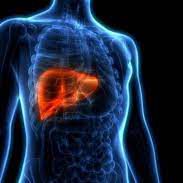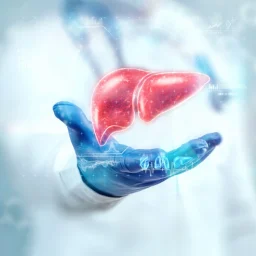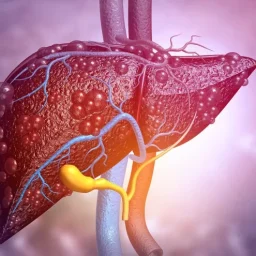
What Are Liver Hemangiomas?

Before discussing whether liver hemangiomas can resolve on their own, it’s essential to understand what they are. A liver hemangioma is a benign (non-cancerous) tumor made up of blood vessels that cluster together. It is one of the most common types of tumors found in the liver, affecting around 20% of the population, with women being more likely to develop them than men. These tumors are often small in size and may not cause any noticeable symptoms.
Most liver hemangiomas are discovered during imaging tests such as ultrasound, CT scans, or MRIs, typically conducted for reasons unrelated to liver health. While a liver hemangioma can grow, it often remains stable in size and does not lead to serious health problems.
Can Liver Hemangiomas Resolve on Their Own?
The short answer is that liver hemangiomas generally do not resolve on their own. Unlike some other types of tumors, liver hemangiomas are not known to shrink or disappear without medical intervention. Most of the time, these tumors do not cause symptoms, and in such cases, they can remain stable for many years without the need for treatment. However, it is important to note that not all liver hemangiomas behave the same way.
Why Do Liver Hemangiomas Not Resolve on Their Own?
Liver hemangiomas are composed of blood vessels that grow abnormally, forming a benign cluster. These growths tend to remain stable once they form and typically don’t regress or shrink on their own. The process of resolving a hemangioma would involve the blood vessels shrinking and the abnormal blood flow being normalized, which is not a common occurrence in these types of tumors.
Additionally, because the tumor is composed of blood vessels, it tends to have a rich blood supply, which helps sustain its growth. As a result, liver hemangiomas often remain stable or grow slowly rather than spontaneously shrinking. There are, however, some situations where a hemangioma may stop growing or shrink, but these cases are rare and often unpredictable.
What Factors Influence the Behavior of Liver Hemangiomas?
While liver hemangiomas typically do not resolve on their own, several factors can influence their size, growth, and symptoms. Understanding these factors can help individuals with liver hemangiomas manage their condition effectively.
1. Size of the Hemangioma
The size of the hemangioma plays a crucial role in determining its potential for causing symptoms or complications. Small liver hemangiomas (generally less than 5 cm in diameter) are usually asymptomatic and stable. These types of hemangiomas are less likely to cause problems and rarely require treatment. Larger hemangiomas, however, may cause symptoms such as abdominal pain, bloating, and, in rare cases, bleeding.
Although larger hemangiomas are less likely to resolve on their own, they may stop growing or remain stable for long periods. In some rare cases, large hemangiomas may shrink, but this is not common.
2. Hormonal Influences
Hormones, particularly estrogen, can have an impact on the development and growth of liver hemangiomas. Women are more likely to develop liver hemangiomas than men, and the tumors may grow in response to hormonal changes, such as during pregnancy or with the use of oral contraceptives or hormone replacement therapy (HRT).
Hormonal fluctuations can sometimes lead to an increase in the size of existing hemangiomas, but they don’t typically cause them to shrink. This may be an important factor for individuals with liver hemangiomas who are considering pregnancy or taking hormonal medications. In some cases, adjusting or stopping hormone-based treatments may be recommended by a healthcare provider.
3. Age and Gender
Liver hemangiomas are more common in women, especially those of childbearing age. They are often diagnosed in individuals between the ages of 30 and 50, though they can occur at any age. While these tumors are generally stable, women may notice that their hemangiomas grow during pregnancy, likely due to increased estrogen levels.
As individuals age, liver hemangiomas may remain unchanged, although some may grow slowly over time. Age-related factors do not necessarily lead to the resolution of liver hemangiomas, but they can affect how the tumor behaves.
4. Symptoms and Clinical Presentation
Most liver hemangiomas do not cause symptoms and are considered incidental findings during imaging studies for other conditions. However, some individuals with larger hemangiomas may experience symptoms such as abdominal pain, bloating, nausea, and, in extreme cases, jaundice (yellowing of the skin and eyes).
Symptoms are more likely to occur in individuals with larger hemangiomas. These symptoms may prompt individuals to seek medical attention and undergo imaging to assess the size and condition of the tumor. In some cases, if a hemangioma is causing significant problems, medical intervention may be necessary, such as embolization or surgery.
When Should Medical Intervention Be Considered?
Although liver hemangiomas typically don’t resolve on their own, treatment may be needed in certain situations. The need for medical intervention depends on the size of the hemangioma, whether it is causing symptoms, and if there are any complications.

1. Symptomatic Hemangiomas
If the liver hemangioma causes pain, nausea, or other gastrointestinal symptoms, medical intervention may be necessary. Pain is often associated with the expansion of the hemangioma or the pressure it exerts on surrounding tissues. In rare cases, a hemangioma may rupture, leading to severe internal bleeding, which requires immediate medical attention.
2. Large Hemangiomas
Large liver hemangiomas (greater than 5 cm in size) have a higher likelihood of causing complications and may be more prone to rupture. Although large hemangiomas are unlikely to resolve on their own, they can be monitored over time to ensure they are not causing further issues. In some cases, surgical intervention may be required to remove the tumor or reduce its size.
3. Liver Function and Bleeding Risk
If a liver hemangioma is found to be affecting liver function or posing a risk of bleeding, intervention may be necessary. In some rare cases, the blood vessels of the hemangioma may rupture, causing significant internal bleeding. If this occurs, the patient may require surgery to repair the rupture and remove the tumor.
4. Pregnancy Considerations
During pregnancy, hormonal changes may cause an existing liver hemangioma to grow. While most hemangiomas do not pose significant risks during pregnancy, those that become enlarged or symptomatic may require further monitoring or intervention. Women with liver hemangiomas should work closely with their healthcare providers to assess the impact of pregnancy on the condition and ensure proper management.
How Are Liver Hemangiomas Managed?
In most cases, liver hemangiomas do not require treatment, especially if they are small and asymptomatic. However, management strategies can be employed depending on the size, location, and symptoms associated with the hemangioma.
1. Observation and Regular Monitoring
For asymptomatic liver hemangiomas, observation is the primary course of action. Regular imaging studies, such as ultrasound, CT scans, or MRI, are used to monitor the size and stability of the hemangioma. If the tumor remains stable and does not cause symptoms, further intervention may not be necessary.
2. Hormonal Therapy Adjustment
For individuals with hormone-sensitive liver hemangiomas, doctors may recommend adjusting or discontinuing the use of oral contraceptives or hormone replacement therapy to prevent further growth. Hormonal therapy may be a contributing factor to the size or development of the hemangioma, and adjusting these treatments may help mitigate the tumor’s growth.
3. Surgical Intervention
In rare cases, surgical removal of the liver hemangioma may be necessary, particularly if the tumor is large, symptomatic, or causing complications. Surgery is typically considered when other treatment options have been exhausted, and the hemangioma poses a significant health risk.
4. Embolization
Embolization is a minimally invasive procedure used to block the blood vessels feeding the hemangioma. This procedure can help reduce the size of the hemangioma and alleviate symptoms. It is typically considered for individuals who are not candidates for surgery or when surgery is not viable.
While liver hemangiomas generally do not resolve on their own, they often remain stable and asymptomatic without the need for treatment. Monitoring is crucial to ensure that the hemangioma does not grow, cause symptoms, or lead to complications. In most cases, liver hemangiomas are benign and do not pose a significant health risk, but larger tumors, symptomatic hemangiomas, or those that cause complications may require medical intervention. Working closely with a healthcare provider to monitor the condition and adjust treatment options as necessary is essential for individuals with liver hemangiomas.





